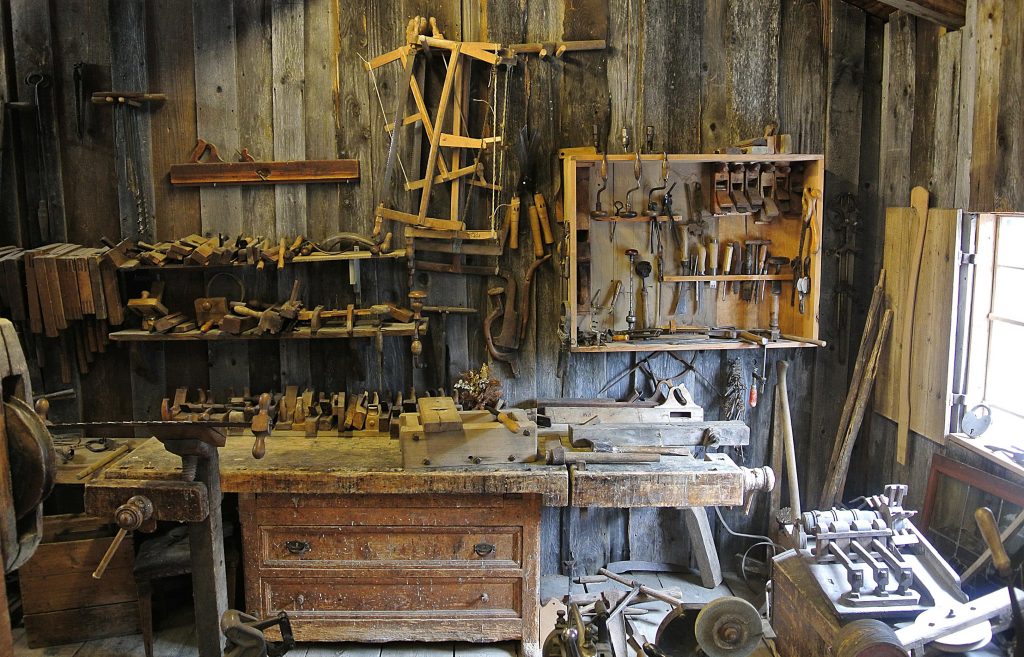
There are many crafts and arts in Crete which have been passed down from generation to generation and most of them could be found all over Crete in the past. Now most of them survive in the hands of few and in some areas of Crete. Some have even been using them as their main source of income, such as knife makers or weavers, woodcarvers and leather makers. Here are some information about those professions / crafts.
Iconography
The Iconography is considered foremost Byzantine Art, with all the variations found through the centuries. Iconography is separated into four types Fresco, portable image, mosaic and miniature manuscripts.
Byzantine painting developed very early on in the broader Hellenic territory. From the 6th century onwards, an adequate number of portable icons and mosaics with iconographic representations have been preserved, a fact that verifies the swift spread of Byzantine iconography.
In Crete consistently grown during the second half of the 14th century. After the fall of Byzantium, the Macedonian School was shut down, which was succeeded in Crete, thus maintaining the eastern art.
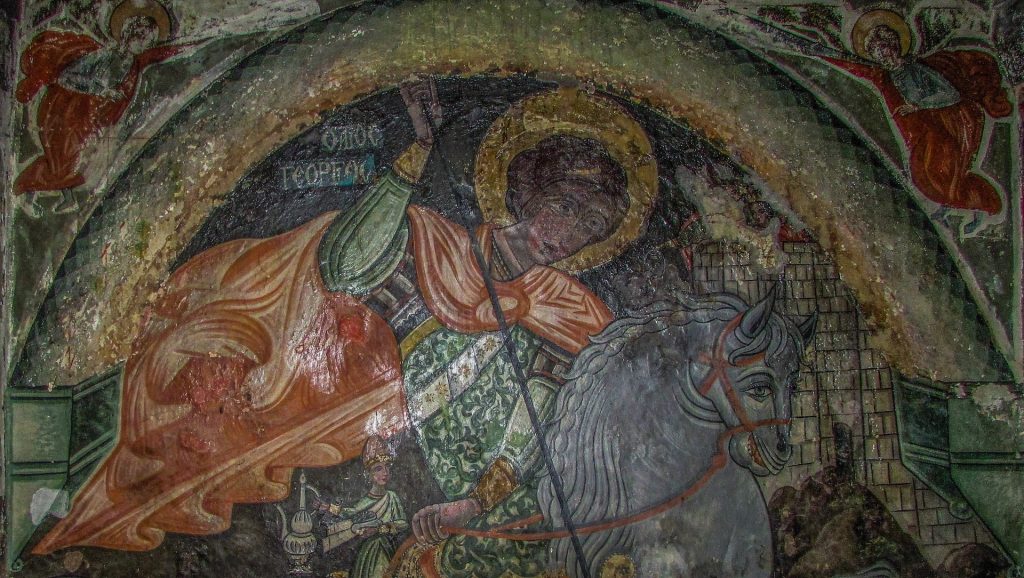
Pottery
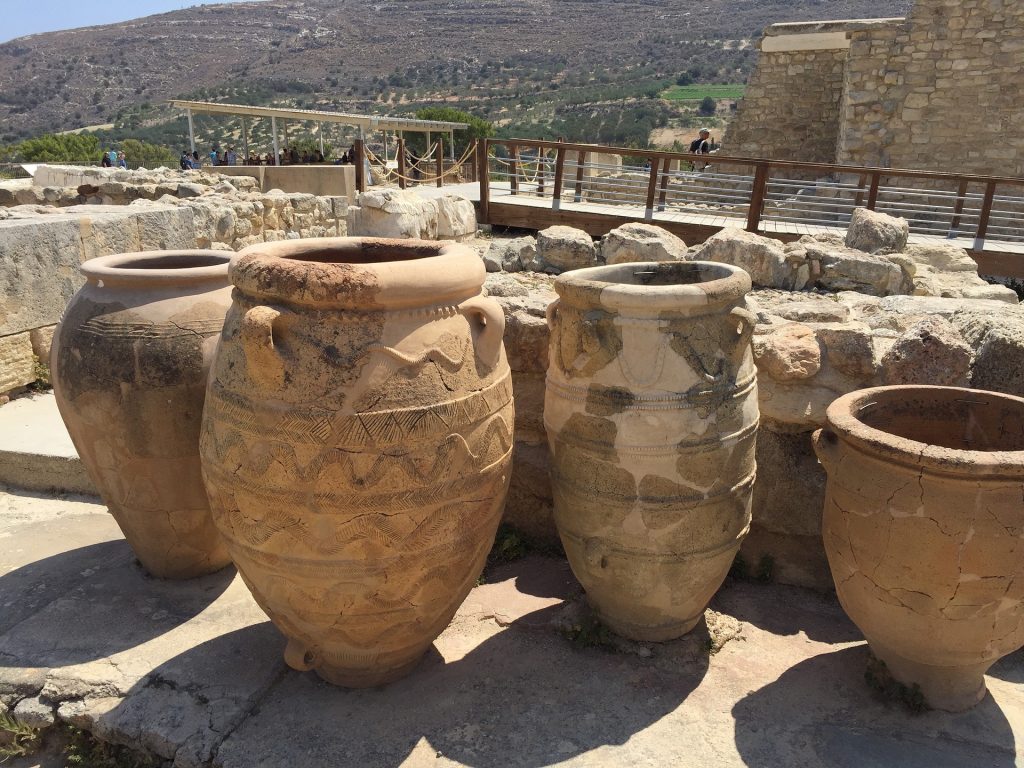
The human desire to give form and shape to the ground.
As early as the Early Minoan period, Crete has developed this art. Pottery has been continuously present on Crete for more than 4,000 years. Ceramic artifacts dating to the Neolithic Age (Stone Age) are on display at numerous museum; they are uncannily similar to those still made on the island today.
Ceramics is the basic occupation of many Cretans, who make not only decorative pottery but also utensils. In the past, the pottery workshops flourished in the prefecture of Lasithi, producing storage objects of everyday use.
There are four different regions where pottery making still flourishes today on Crete, namely Thrapsanos (Herakleion), Margarites (Rethymnon), Nochia (Chania) and Kentri (Lasithi).
Weaving & Basket Weaving
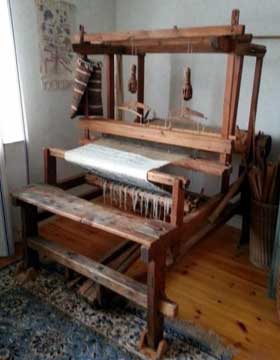
Another of the oldest crafts of Cretan folk art is basketry, which has been declining for many years. Using raw materials provided by nature such as wicker or reed, people created objects needed in everyday rural life. Basketry continues to flourish as a craft in some villages across Crete.

Knife Making
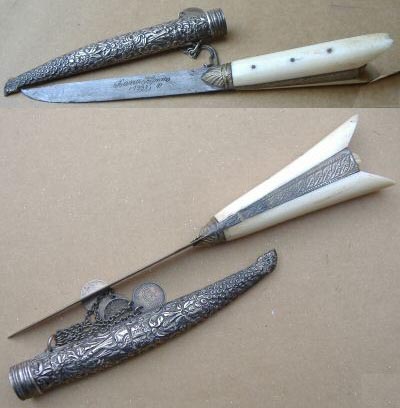
The knife is an essential complement to the Cretan traditional costume.
The typical Cretan knife, was born at the end of 18th century. Fire, anvil, steel, hammer, pliers with long arms and the skills of the knife maker are the main elements for the manufacture of the Cretan knife. Its blade is thick and flat, thicker in its base and is sharpened on the one only side.
The shape is straight, a bit curved at the end with a slightly upwards tip. In the middle of 19th century the Cretan manufacturers made quite big knives with lengths up to 80cms. These knives could be used as swords with big penetrating ability.
In the 19th century the knife maker made the steel by himself. Today it is bought ready to use. The procedure starts with the cutting of the piece at the desired length, then it is transformed with the help of scissors or spinners, the heating-melting, perfection and polishing of the knife.
On the blade traditional rhyming couplets (Cretan ‘matinada’) are often engraved. Such traditional manufacturers can be found throughout Crete.
Wood Carving
Wood carving is a form of woodworking by means of a cutting tool (knife) in one hand or a chisel by two hands or with one hand on a chisel and one hand on a mallet, resulting in a wooden figure or figurine, or in the sculptural ornamentation of a wooden object. The phrase may also refer to the finished product, from individual sculptures to hand-worked mouldings composing part of a tracery.
More recent is the history of woodcarving, which developed primarily during the Byzantine period, the most important items being religious objects, as well as furniture and other household items. Even today in many areas, local craftsmen create traditional carved wooden objects.
Professional wood carvers continue to preserve this rare art, passing the secrets and techniques of their profession from generation to generation. One well known woodcarver of the Kissamos municipality can be found in Topolia.
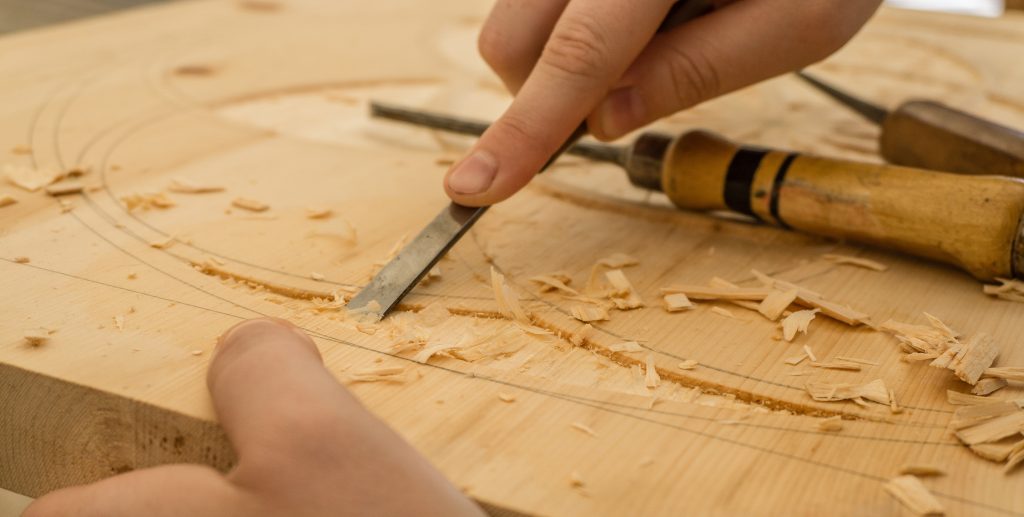
Leather Working
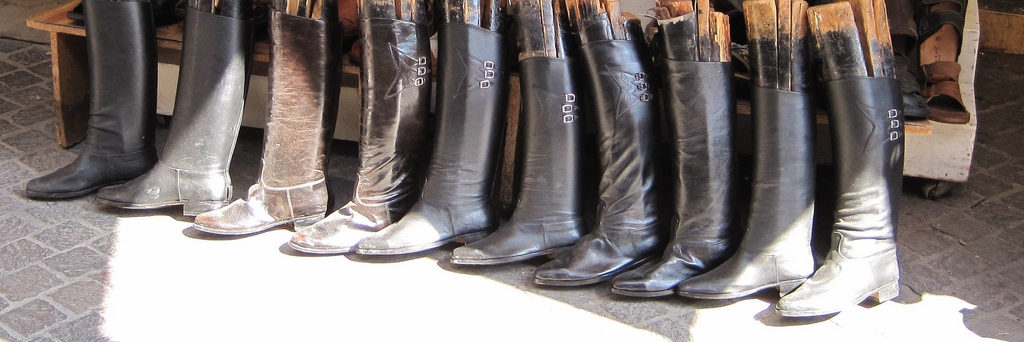
Leather working was used in making a lot of everyday items in Crete. Usually the leather from goats or sheep was used to craft sandals, knife seethes, bags and many more. The most well-known leather crafting item, was and still is, stivania. Stivania are handmade Cretan boots and one of the most characteristic elements of the traditional costumes of Crete.
Stivania are worn by men only and are even worn today in many regions. In Crete there are many leather workers that still craft and sale these wonderful traditional boots. Today they are even made in baby sizes. Stivania are preferred not only by locals but also by many visitors, because they are nice, stylish, durable and comfortable.
Stivania are made on the leg of the “client” and so they are tailor made exactly to any peculiarities of the foot. The word stivania may come by the Italian word “stivale” which means boots.
Nowadays the shoemakers continue to manufacture stivania with the old way and the same reliability, promising that these handmade boots will last a lifetime!